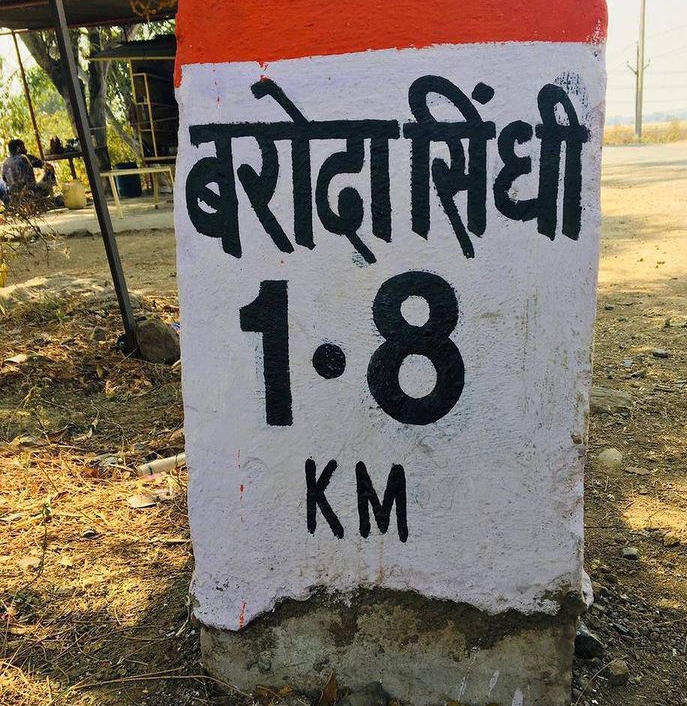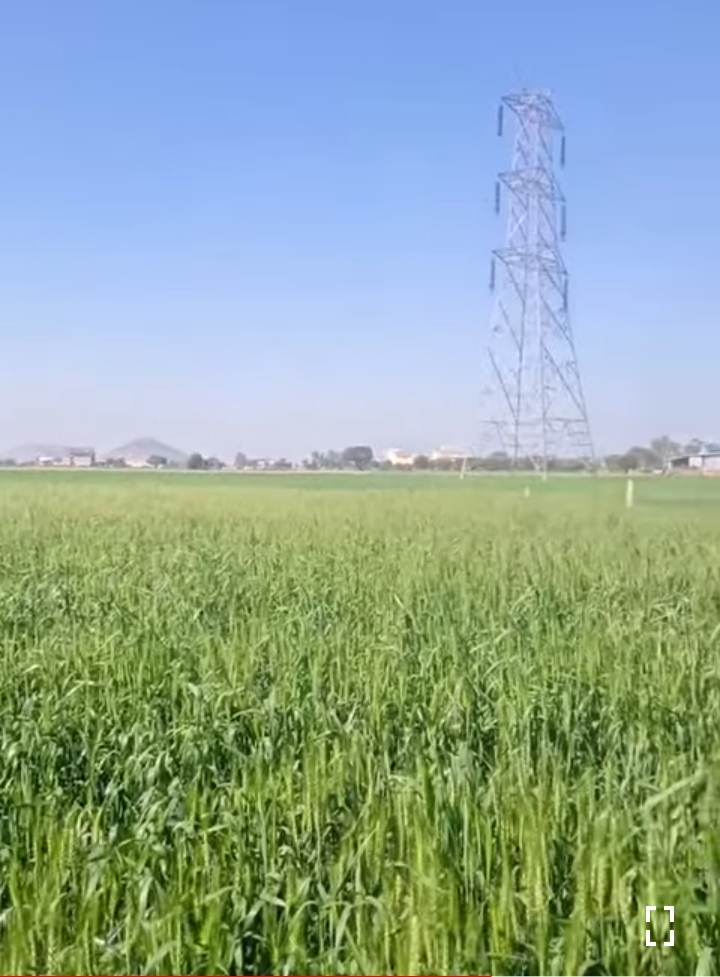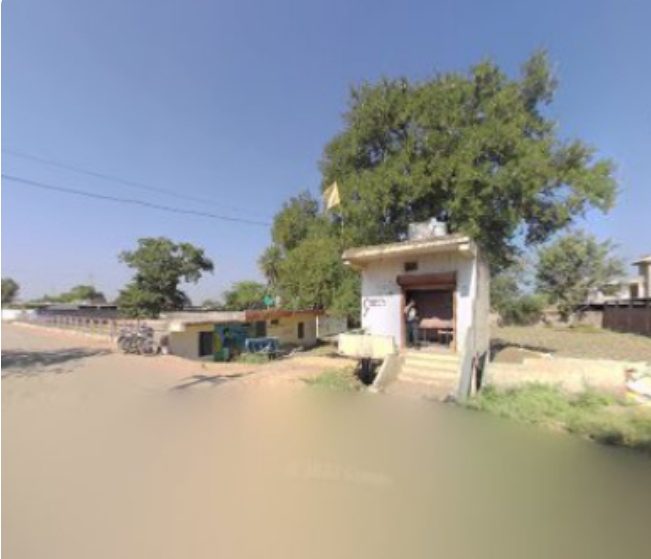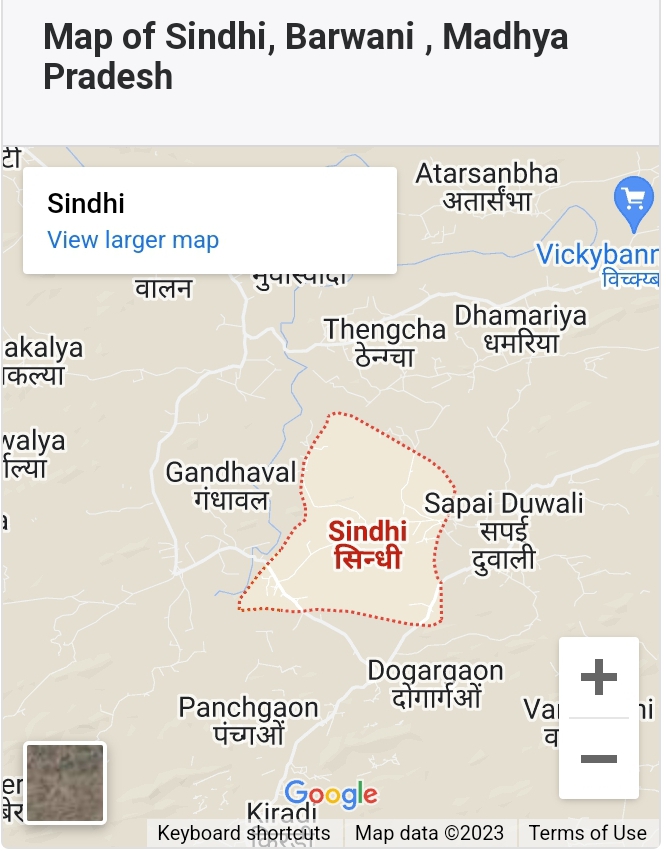
Some more villages named as ‘Sindhi’ are situated in Madhya Pradesh and Maharashtra states.
Nasir Aijaz
While wandering the world of Google in search of scattered Sindhis who had to migrate from Sindh as a result of the 1947 partition of Indian subcontinent, I noticed some Indian villages named as ‘Sindhi’, which soared my curiosity to explore further. One of such villages, I found, was ‘Sindhi Baroda’. My first idea was that this village could be a nearby locality of Baroda (renamed as Vadodara), a city in Gujarat state of India, where a large number of Sindhis are settled, but I found that it is located far away from Vadodara near Indore in Madhya Pradesh state and the distance between them is about 350km.
Administratively, the Sindhi Baroda village falls in the Division, District and Taluka Indore and hardly few kilometers from Indore city and 197km north of Bhopal, the capital city of Madhya Pradesh state.

Madhya Pradesh with an area of 308,245 sq.km is the second largest state in India. It is located in Central India. The state is bound on the north by Uttar Pradesh, the east by Chhattisgarh, the south by Maharashtra and the west by Gujarat and Rajasthan.
Sindhi Baroda Village is accessible by train also as Indore and Lakshmibai railway stations are very close to it.
The demographics of Sindhi Baroda showed that Hindi is the local language here besides Urdu with no mention of Sindhi language. As per estimated figures, Sindhi Baroda Village population in 2023 is 1218 which according to last census in 2011, was 998, out of it 512 were males and 486 females. Just one year back in 2022, the number of inhabitants of this village was estimated at 1118. The literate people as per old data were 501, with 326 male and 175 female.
People living in Sindhi Baroda depend on multiple skills. According to 2011 census, the total workers were 479 out of which men were 290 and women were 189. A total of 227 cultivators depended on agriculture farming including 138 men and 89 women. Some 149 people work in agricultural land as a labor in Sindhi Baroda, including 69 men and 80 women.
A primary school of class one to five was established in this village in 1952 and it is managed by the Department of Education, and has co-education system with Hindi medium of instruction. The school has government building of 2 classrooms for instructional purposes and 2 other rooms for non-teaching activities. The school has a separate room for Head master/Teacher. But like many schools of Sindh, this Indian school has no boundary wall, no electric connection. The source of drinking water in the school is hand pumps. Fortunately, the school has one toilet each for boys and girls. The school has no playground but a library with 78 books. The school has no computers for teaching and learning purposes but the children are provided with mid-day meals prepared in school premises, as per information available on a website.

I found another Sindhi village in Madhya Pradesh that is a medium size village located in Pati Tehsil of Barwani district, with total 333 families residing. The Sindhi village has population of 1967 of which 998 are males while 969 are females as per Population Census 2011.
In Sindhi village, population of children with age 0-6 is 458 which makes up 23.28 % of total population of village. Average sex ratio of Sindhi village is 971 which is higher than Madhya Pradesh state average of 931. Child sex ratio for the Sindhi village as per census is 839, lower than Madhya Pradesh average of 918.
Sindhi village has lower literacy rate compared to Madhya Pradesh. In 2011, literacy rate of Sindhi village was 24.72 % compared to 69.32 % of Madhya Pradesh. In Sindhi village male literacy stands at 30.44 % while female literacy rate was 19.08 %.
As per constitution of India and Panchyati Raaj Act, Sindhi village is administrated by Sarpanch (Head of Village) who is elected representative of village. There was no information available about schools and hospital in Sindhi village.
In Sindhi village, most of the population is from Schedule Tribe that constitutes 81.95 % while Schedule Caste were 4.37 % of total population.
In Sindhi village out of total population, 1056 were engaged in work activities. Some 81.53 % of workers describe their work as Main Work (Employment or Earning more than 6 Months) while 18.47% were involved in marginal activity providing livelihood for less than 6 months. Of 1056 workers engaged in Main Work, 627 were cultivators (owner or co-owner) while 230 were Agricultural laborer.
Third one is called ‘Sindhi Basti’, a Locality in Burhanpur City in Madhya Pradesh State, India. It belongs to Indore Division.
Again, there was the mention of another Sindhi village in Pati, Barwani Madhya Pradesh with around 145 families residing there, administered by Sarpanch who is elected every five years. This may be the same village mentioned above, but since the statistics didn’t match, I have thought it necessary to share here.
As per the Census India 2011, Sindhi village has population of 905 of which 462 are males and 443 are females. The population of children between ages 0-6 is 255 which is 28.18% of total population.
The sex-ratio of Sindhi village is around 959 compared to 931 which is average of Madhya Pradesh state. The literacy rate of Sindhi village is 7.73% out of which 8.87% males are literate and 6.55% females are literate. There are 99.56% Scheduled Tribe of total population in Sindhi village.
Another Sindhi Village I found was ‘Sindhi’ (सिंधी), located in Vidarbh region, Taluka and District Kalmeshwar, Division Nagpur, State Maharashtra. The village is at a distance of 31km west of Nagpur and 791km from Mumbai. Here, Marathi and Hindi languages are spoken. The rivers that flow near Sindhi village are Kar and Sur.

According to further description, Sindhi is a small village/hamlet that is managed by Sindhi Panchayat. The nearest railway stations are Kohli and Kalmeshwar railway station. Mohpa, Kalameshwar, Savner and Nagpur are the nearby towns to Sindhi village having road connectivity.
The Maharashtra State has also another Sindhi village in Umri Taluka (Tehsil) of Nanded district.
According to Census 2011 information the Sindhi village is situated 13km away from sub-district headquarter Peth Umri (tehsildar office) and 32km away from district headquarter Nanded. As per 2009 statistics, Sindhi village is also a gram panchayat.
The total geographical area of village is 1457.49 hectares. Sindhi village has a total population of 3179 people, out of which male population is 1635 while female population is 1544. Literacy rate of Sindhi village is 58.92% out of which 66.73% males and 50.65% females are literate. There are about 638 houses in Sindhi village.
When it comes to administration, Sindhi village is administrated by a Sarpanch who is elected representative of the village by the local elections. As per 2019 statistics, Sindhi village comes under Naigaon assembly constituency and Nanded parliamentary constituency. Peth Umri is nearest town to Sindhi village for all major economic activities, which is approximately 13km away. Public Bus Service and Private Bus Service are available within village while railway station is within 5 km distance.
A website of Sindhu World mentions that Sindhi are settled in 53 cities of Madhya Pradesh state having Sindhi population of around one million. It also shares the list of cities and towns with population figures but nowhere any such village is mentioned. According to Sindhu World, Indore has a population of 300000 Sindhis from where Shankar Lalwani was elected as the Member of Parliament (MP) in 2021. Similarly, in Maharashtra state, around two million Sindhis are settled in 77 cities and towns yet no such villages with Sindhi name could be found in the list shared on website.
I had no other source to verify but to contact a Sindhi lady author in Bhopal and a socially active Sindhi in Vadodara to inquire about Sindhi Baroda Village and other Sindhi villages but they were not aware of it.
May I hope that Sindhis of India in general and Madhya Pradesh and Maharashtra will help verify the facts stated above.
_____________________
The writer is a senior journalist, editor of Sindh Courier and author of nine books on literature, history and languages. He is based in Karachi Sindh.
Source of photos: Google, Source of Information: One Five Nine, Village Info, Census 2011, Census India 2011, Soki, SLB Madhya Pradesh, Schools, Sindhu World